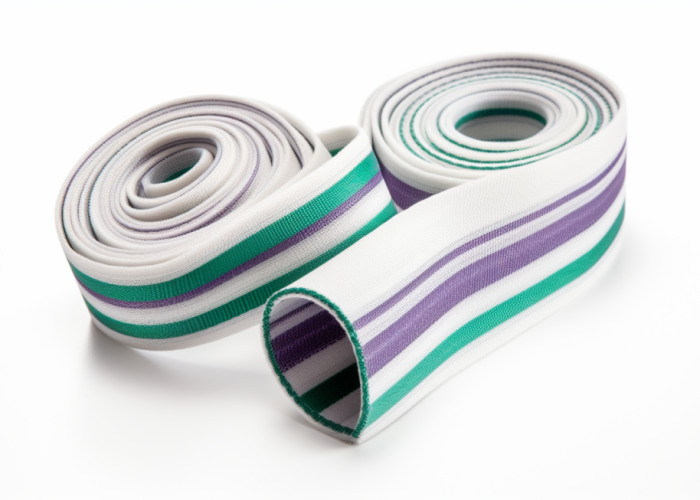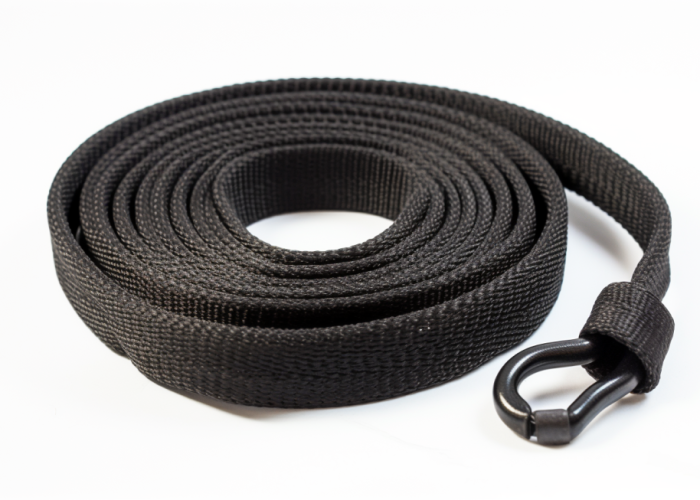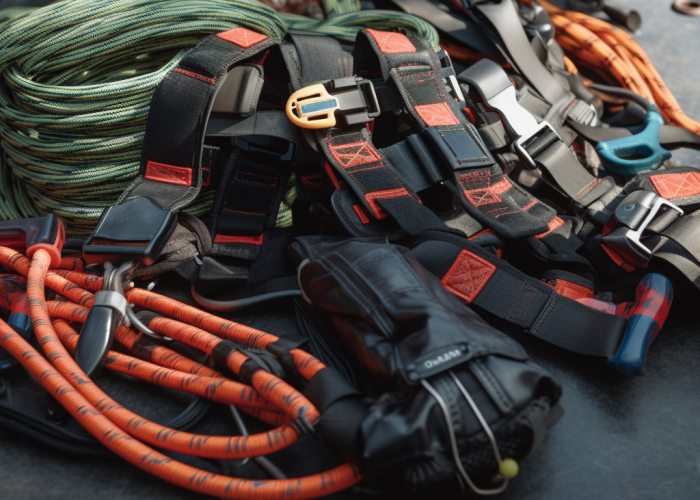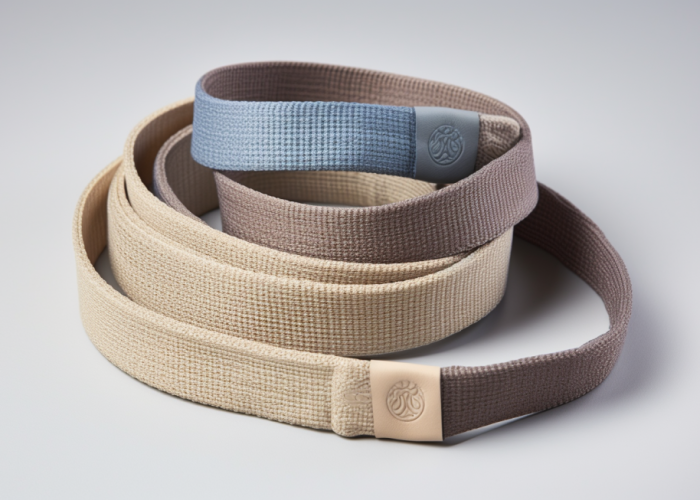Marine environments challenge materials with saltwater exposure, UV radiation, and dynamic loading. Engineers need solutions that maintain integrity while resisting degradation. Custom tubular webbing offers manufacturers a durable alternative to traditional materials with advantages in strength, weight, and application flexibility.
Yes, tubular webbing can be used in marine applications due to its enclosed construction, superior saltwater resistance, and enhanced UV durability. High-quality marine-grade tubular webbing retains 90-95% of its strength after prolonged saltwater exposure while offering 15-30% higher breaking strength than flat webbing alternatives, making it ideal for mooring systems, sail reinforcements, and safety applications.
Compare tubular webbing vs. marine materials with tips on salt, UV, and safety for better marine equipment selection.


Webbing manufacturing expert with 15+ years of experience helping product developers build high-performance straps for industrial, medical, and outdoor use.
Tubular webbing’s closed-loop construction, UV-resistant synthetic fibers, and specialized coatings make it exceptionally suitable for marine environments. This unique construction prevents water and debris infiltration while maintaining superior strength-to-weight ratios of 5:1 compared to standard flat webbing, making it ideal for applications exposed to harsh saltwater conditions.
At a glance:
Tubular webbing excels in mooring lines, sail reinforcement, life jacket harnesses, and equipment tie-downs. Traditional materials need replacement every 1-2 seasons, while marine-grade tubular webbing lasts 3-5 seasons, reducing warranty claims by 30%.
High-tenacity polyester fibers show only 5% strength loss after 1,000 hours of saltwater immersion (vs 15-25% for standard webbing). The closed construction prevents internal salt crystal formation—a primary failure mode in marine environments.
UV inhibitors meeting ASTM G154 standards maintain structural integrity after exposure equivalent to 3 years in tropical environments, outlasting traditional nylon webbing that degrades within 8-12 months.
Specialized weaving distributes loads evenly, reducing peak loads by 15-20% during sudden changes. This protects connected hardware under cyclical loading conditions typical in wave action environments.
Water-repellent treatments enable 80% faster drying and prevent the 40-60% weight increase common with water-saturated materials, ensuring consistent performance in changing weather conditions.
Tubular webbing performs optimally in marine applications requiring high strength, salt resistance, and UV durability including mooring systems, sail reinforcement, safety harnesses, and deck equipment securement. These applications leverage tubular webbing’s strength and durability while benefiting from its superior resistance to degradation in harsh marine environments.
At a glance:
Mooring applications benefit from tubular webbing‘s resistance to chafing and maintained flexibility after saltwater exposure. It provides comparable strength to traditional rope systems with improved UV resistance, extending service life by 50-70% while its flat profile reduces rolling and tangling issues.
Sail reinforcement applications utilize tubular webbing’s high strength-to-weight ratio at high-stress points, particularly along leech edges and corner reinforcements. It distributes loads across wider areas, reducing point loading and extending sail life, while resisting UV degradation that affects traditional reinforcement materials.
Safety applications including life jackets and boarding harnesses benefit from tubular webbing’s consistent wet-condition performance. Testing confirms it retains 95% of rated breaking strength when wet, compared to 70-80% for alternatives—critical in safety-rated applications where strength loss could lead to failure.
Equipment securing systems benefit from tubular webbing’s resistance to moisture absorption and freezing. Traditional securing methods become brittle in freezing conditions, while tubular webbing remains workable. Its natural vibration damping properties reduce noise and prevent gradual loosening of secured equipment.
Marine furniture applications utilize tubular webbing’s strength and weather resistance to create durable seating and support structures. Its ability to withstand continuous exposure to moisture, salt spray, and sunlight makes it ideal for exterior furniture where traditional materials show premature degradation.

Salt water exposure has minimal impact on high-quality tubular webbing, with properly manufactured products retaining 90-95% of original strength after continuous immersion. This exceptional salt water resistance stems from inherently resistant synthetic fibers, specialized weaving techniques that eliminate water-trapping voids, and protective coatings that prevent saltwater intrusion.
At a glance:
Saltwater’s primary degradation mechanism involves salt crystal formation within webbing structure during drying cycles. These crystals create internal abrasion points that gradually sever fibers. Tubular webbing’s continuous construction eliminates the internal voids where salt crystals typically form, providing inherent protection against this degradation pathway.
The hydrolysis process—where water molecules attack polymer chains—is accelerated in saltwater environments. Marine-grade tubular webbing uses polyester fibers specifically engineered to resist hydrolysis. Laboratory testing demonstrates less than 3% tensile strength reduction after 1,000 hours of continuous saltwater immersion, compared to 12-18% reduction in standard webbing.
Surface degradation from salt typically affects outer fibers first. Advanced manufacturing incorporates salt-resistant fibers at the surface layer of tubular webbing, providing sacrificial protection for load-bearing interior fibers. This approach extends usable service life by protecting critical structural components from direct salt exposure.
Testing under ASTM B117 salt spray conditions demonstrates that marine-grade tubular webbing retains colorfast properties and maintains structural integrity even after exposure equivalent to five years of typical marine use—a significant advantage over traditional materials that show visible degradation after just 6-12 months.
Marine-grade tubular webbing provides exceptional UV resistance, retaining 85-90% of original breaking strength after 1,000 hours of accelerated UV exposure testing. This performance significantly outperforms standard webbing, which typically retains only 40-60% strength after identical exposure, making it ideal for continuous outdoor marine applications.
At a glance:
Ultraviolet degradation represents one of the most significant challenges for materials in marine environments. Marine-grade tubular webbing addresses this through UV-resistant additives throughout the fiber structure rather than just surface treatments, ensuring protection remains even as the outer layer experiences wear.
Color stability under UV exposure serves as a visual indicator of material integrity, with premium marine-grade webbing showing minimal color shift even after extended exposure. Testing under ASTM G154 cycling protocols demonstrates color retention exceeding 90% after exposure equivalent to three years of continuous outdoor use.
The enclosed tubular construction provides additional protection by shielding inner fibers from direct UV exposure. This structural advantage creates a sacrificial outer layer that absorbs the majority of UV degradation while preserving structural integrity of load-bearing inner fibers, significantly extending functional service life compared to flat webbing.
Laboratory testing comparing marine-grade tubular webbing to standard alternatives demonstrates that while standard webbing loses 40-60% of breaking strength after 1,000 hours of accelerated UV exposure, marine-grade tubular webbing typically retains 85-90% of original strength—a performance difference that translates directly to extended service life.
Tubular webbing outperforms flat webbing, stainless steel cable, and nylon rope in marine environments with 15-30% higher breaking strength and superior durability. The enclosed construction prevents water infiltration while distributing loads more evenly, resulting in 1.5-2 times longer service life while providing substantial weight reduction compared to metal alternatives.
At a glance:
Tubular webbing’s continuous construction eliminates water infiltration and freeze damage common in flat webbing. In freeze-thaw testing, it retains 95% flexibility after 20 cycles, compared to just 60-70% for alternatives.
The enclosed structure distributes dynamic loads from wave action more evenly, reducing peak stresses by 15-20%. This prevents the fatigue failure common in traditional materials while eliminating the sharp burrs or frayed ends that develop in metal alternatives.
Tubular webbing absorbs 5-10% less water than flat alternatives, adding minimal weight when saturated versus 20-30% for flat webbing and up to 150-200% for traditional rope. This translates to faster drying times and maintained performance in wet conditions.
Despite a 15-30% premium in initial cost, tubular webbing’s extended service life delivers 40-50% lower total ownership cost across five years, as verified by multiple commercial marine equipment manufacturers who reported significant warranty claim reductions after switching.

Advanced manufacturing techniques including specialized weaving patterns, heat stabilization, and integrated coating processes significantly enhance tubular webbing performance in marine environments. These techniques increase breaking strength by 20-30%, improve dimensional stability by 40-50%, and extend service life by 150-200% compared to standard production methods.
At a glance:
High-density weaving uses increased pick counts to create tighter fiber spacing, reducing water penetration while increasing abrasion resistance by 40-50%. Heat stabilization sets the molecular structure of fibers, reducing stretch under load and maintaining dimensional tolerance within 1-2% even after 100 wet-dry cycles.
Edge-sealing technology uses ultrasonic cutting to simultaneously cut and melt polymer structures, creating waterproof barriers at termination points. This reduces water wicking by over 90% compared to mechanical cutting methods, significantly extending service life.
Integrated coating processes apply protective treatments during manufacturing rather than after, creating molecular bonding that won’t separate during service. Multi-stage quality testing implements salt immersion, UV exposure, and dynamic load cycling to verify performance in harsh marine conditions.
Leading marine equipment manufacturers have validated these techniques through field testing, with documented cases showing zero failures after 36 months in conditions where traditional materials failed at 18 months, resulting in substantial warranty claim reductions.
Marine applications require safety factors of 5:1 to 7:1 for tubular webbing due to environmental degradation, dynamic loading, and critical failure consequences. These conservative design ratios account for strength reduction from UV exposure, saltwater contact, and cyclic loading while ensuring adequate performance margins throughout the expected service life.
At a glance:
Engineering calculations should account for 15-20% strength reduction at mid-life for properly specified marine-grade materials. Dynamic loading from wave action and sudden impacts can generate peak loads 30-50% higher than static conditions, requiring appropriate safety margins.
Proper chafe protection with protective sleeves or thimbles at contact points can extend service life by 300-400% in applications with continuous movement. For safety-critical applications, periodic load testing to 150% of working load provides quantitative performance verification.
Temperature extremes significantly impact performance. While tubular webbing maintains flexibility down to -20°C, ice formation can create sharp edges that damage fibers. At temperatures above 70°C, degradation accelerates even in UV-stabilized materials.
Marine-grade tubular webbing meets international standards including ANSI Z359.1 for fall protection, ISO 12401 for deck harnesses, and USCG requirements for flotation devices, ensuring regulatory compliance for commercial marine applications.
Color selection significantly impacts tubular webbing performance in marine environments, with darker colors typically showing 15-25% faster UV degradation than lighter options. While black webbing absorbs more solar radiation and degrades faster, specialized color formulations with enhanced UV packages can provide both visibility and durability advantages for specific applications.
At a glance:
UV degradation rates vary by color choice, with lighter colors demonstrating superior resistance. Black webbing typically retains 70-75% of original breaking strength after 1,000 hours of UV exposure, while light gray material retains 85-90% under identical conditions.
Black webbing can reach surface temperatures 25-30°F higher than light-colored materials under identical sun exposure, accelerating degradation and affecting adjacent components. High-visibility colors improve detection distances by 200-300% in low-light conditions, enhancing safety outcomes.
Marine-grade coloration uses specialized UV-resistant dyes that maintain color integrity throughout service life. Color selection impacts maintenance inspection effectiveness, with light colors better revealing oil contamination while darker colors more clearly show salt deposits and surface abrasion.
Field testing with commercial marine equipment manufacturers confirms color selection impacts replacement frequency, with light-colored webbing in identical applications typically requiring replacement 20-25% less frequently than dark alternatives in continuous outdoor exposure.

Tubular webbing offers marine manufacturers superior performance through enhanced saltwater resistance, UV durability, and strength-to-weight advantages. Its specialized construction significantly extends service life in harsh marine environments, reducing equipment failures and warranty claims. Contact us to explore custom manufacturing solutions tailored to your specific marine product requirements.
No, tubular webbing is not completely waterproof but is highly water-resistant. The enclosed construction significantly reduces water infiltration compared to flat webbing, absorbing only 5-10% of its weight when saturated. Special hydrophobic coatings can further enhance water resistance for critical marine applications.
Marine-grade tubular webbing typically lasts 3-5 years in continuous outdoor marine environments. This represents a 150-200% longer service life than standard webbing materials. Critical safety applications should follow a 3-year replacement schedule regardless of visible condition to ensure maximum reliability.
Yes, custom colors are available with equivalent performance specifications and 2-3 week lead times. Light colors offer 15-25% better UV resistance than dark options. High-visibility colors including international orange and safety yellow provide enhanced safety benefits with 200-300% greater visibility in low-light conditions.
Yes, marine-grade tubular webbing meets ISO 12402, ASTM D6775, and USCG requirements for marine applications. Certification documentation is available for regulatory compliance. Third-party testing confirms performance specifications including salt resistance, UV durability, and breaking strength.
Tubular webbing carries a 15-30% price premium over standard materials but delivers 40-50% lower total ownership cost. The extended service life, reduced replacement frequency, and decreased equipment downtime provide significant long-term value. Minimum order quantities start at 500 linear feet with sample packs available for testing.
Minimal maintenance includes freshwater rinsing after saltwater exposure and periodic visual inspection for wear. Check for color fading, fuzzy surface texture, or stiffness—all indicators of UV degradation. Inspect attachment points and hardware interfaces for signs of abrasion or material thinning.